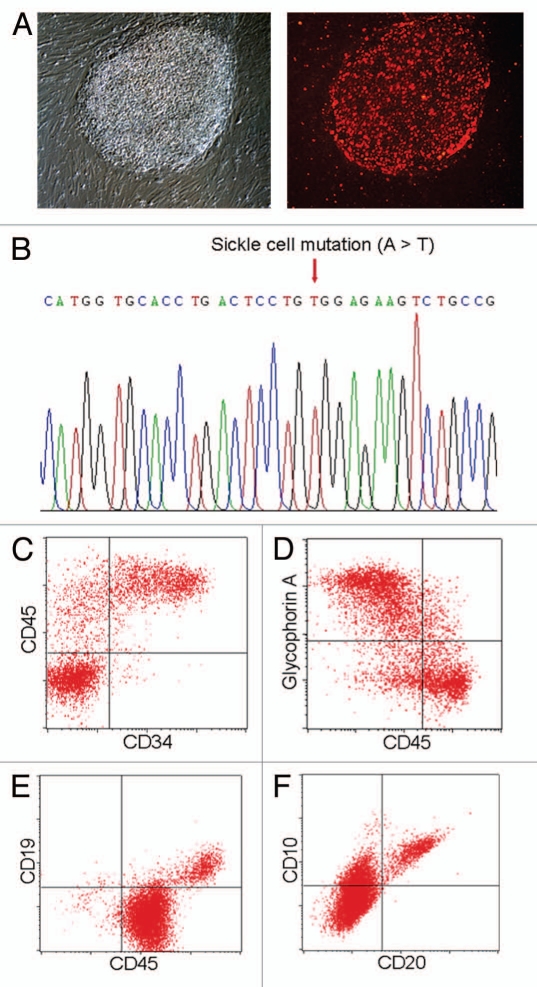Figure 1.
Generation and differentiation of patient specific iPSCs from EBV-B cell lines. (A) Human iPSCs derived from a sickle cell anemia patient EBV-immortalized B cells display typical ESC/iPSC morphology (left partI) and ESC-specific cell surface antigen TRA-1–60 (red right partI). (B) Sequencing of the patient iPSCs confirmed the disease-specific point mutation was preserved in the patient iPSC lines. (C) The patient EBV-B-cell derived iPSCs are also capable of directed hematopoietic differentiation. After 14-d hematopoietic differentiation in serum free media using a spin-EB protocol, ∼20% cells express hematopoietic progenitor markers, CD34 and CD45. (D) The iPSC derived hematopoietic progenitor cells can be further differentiated into glycophorin A+ CD45low committed erythroblasts after 5-d culture in the presence of SCF, IL-3 and EPO. (E) The iPSCs also exhibit lymphocyte differentiation capacity in vitro. After 21 d co-culture on OP9 stromal cells in the presence of FL and IL-7, ∼10% CD19+ cells were detected in the culture. These cells also expressed other pre-B-cell markers such as CD20 and CD10 (F).

